StatEye
Matlab - pulse2stateye
Due to this function only output PDF of eye, postprocessing is needed which cumulative sum PDF.
Probability Density Function(PDF) plot

Bit Error Rate(BER) plot
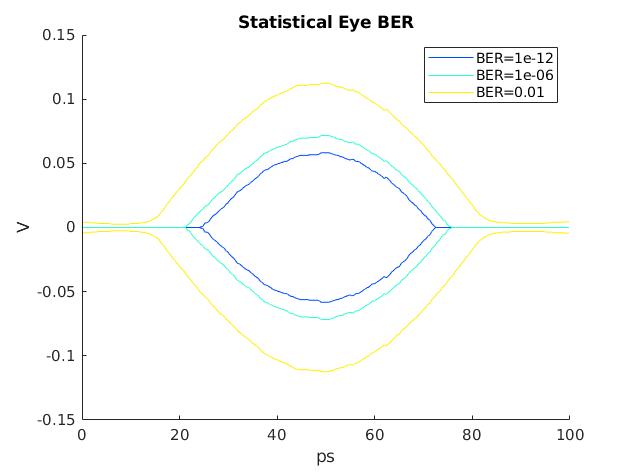
pulse response
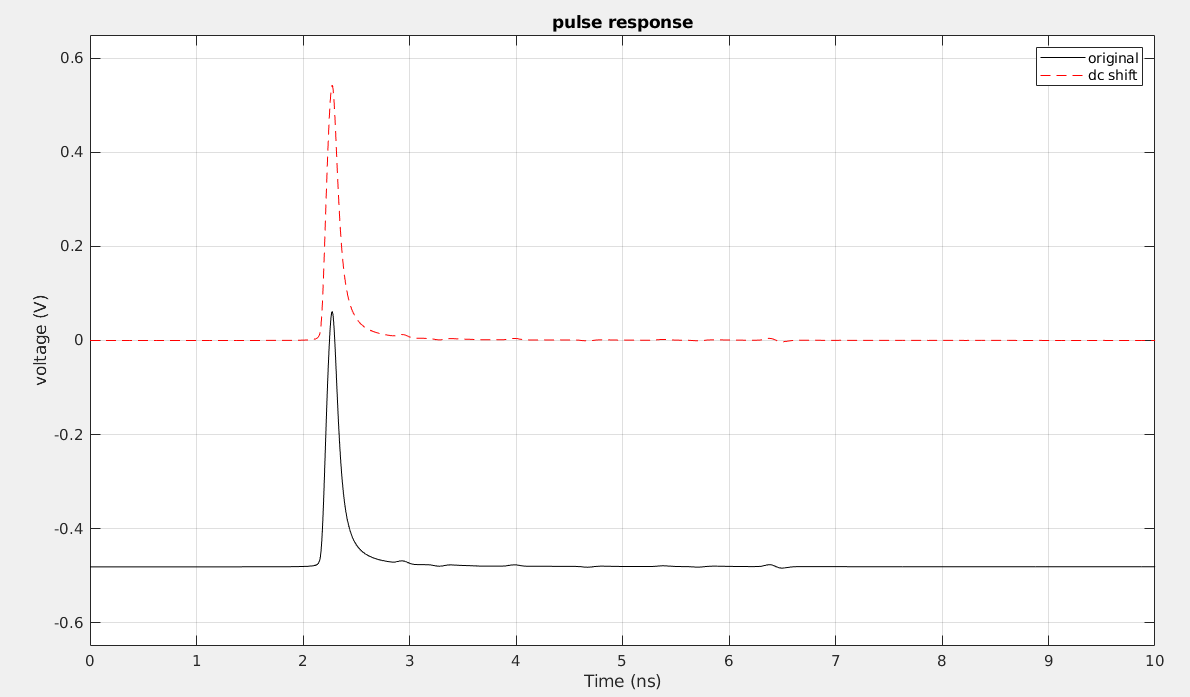
DC shift don't affect
pulse2stateyefunction normallyBoth pulse
[0 0 0 0 .. 0 1 0 0 0 0 0 ...]and[1 1 1 1 ... 1 0 1 1 1 1 ...]can be fed into
pulse2stateyefunctionCAUTION: the
0don't mean common voltage but bit0, which is-Vpeakin differential link
postprocessing function
1 | % REF: https://www.mathworks.com/help/serdes/ref/pulse2stateye.html |
pulse without ISI
Vp2p = 1V
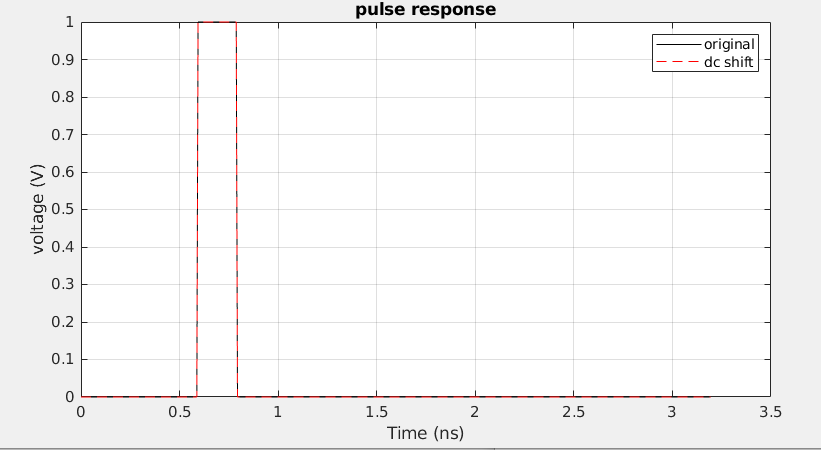
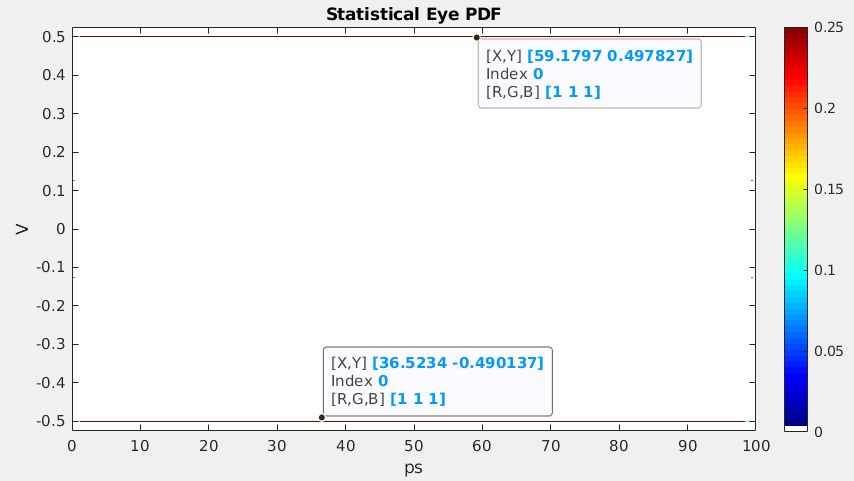
1 | modulation = 2; |
HSPICE - snpsSimADE
use StatEye Analysis in HSPICE
create netlist with hspiceD in Virtuoso

modify netlist
1 | P1 vi 0 port=1 Z0=0 LFSR (1 0 0 100p 100p 1G 1 [5,2]) |
Note both
Z0=0andZ0=1Gare used to remove port's effect, which is used as ideal voltage source and voltage monitor
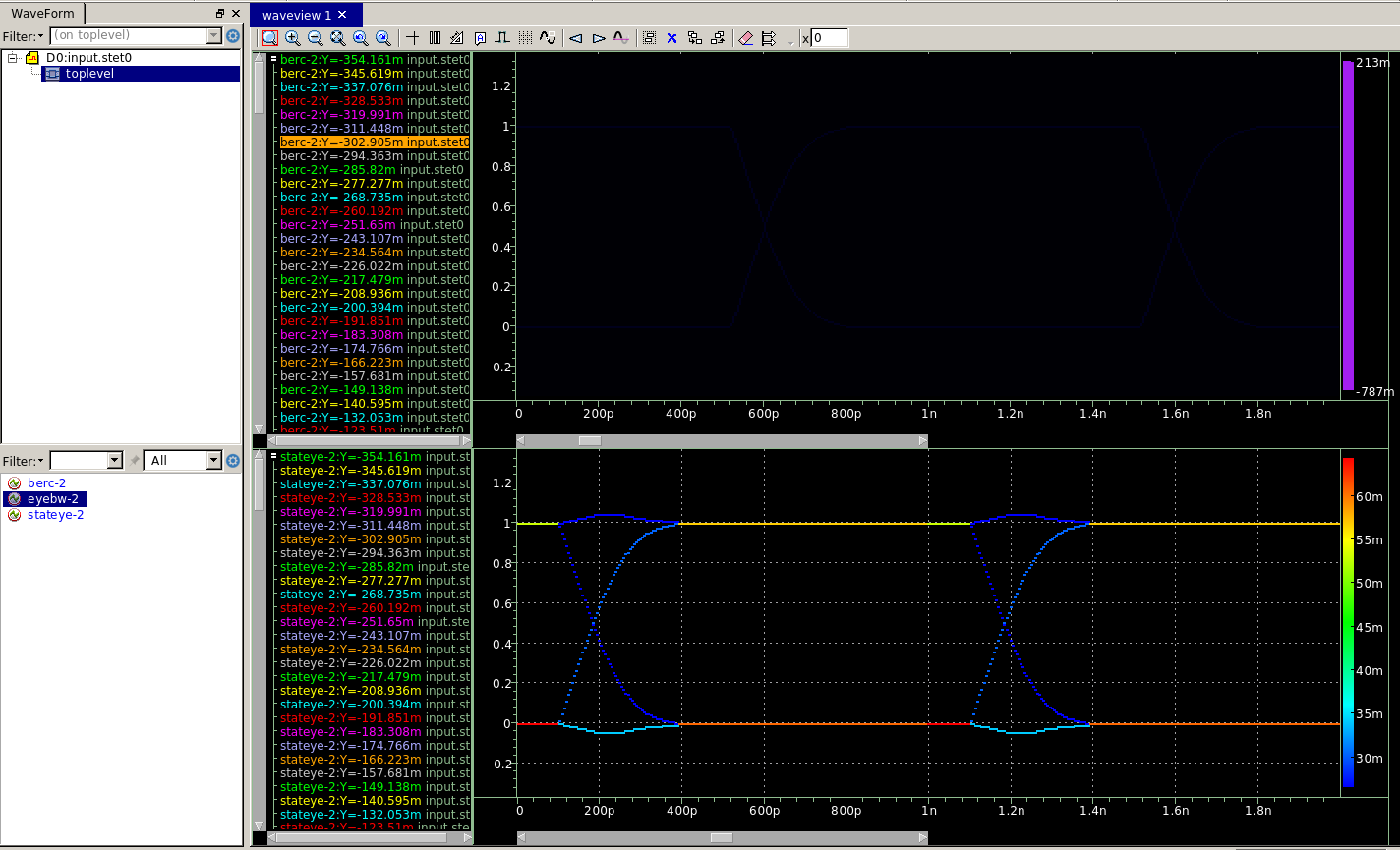
The
.probe stateyecommand generatesnetlist.stet#andnetlist.stev#for following purposes:
- netlist.stet#: eye(t,v), eyeBW(t,v), eyeV(t), ber(t,v) and bathtubV(t)
- netlist.stet#: eye(t,v), eyeBW(t,v), eyeV(t), ber(t,v) and bathtubV(t)
setup
.cdsinit
1 | load( strcat( getShellEnvVar("HSPICE_HOME") "/hspice/interface/snpsSimADE.ile" )) |
environment variable
1 | export CDS_LOAD_ENV=CSF |
references
Sanders, Anthony, Michael Resso and John D'Ambrosia. “Channel Compliance Testing Utilizing Novel Statistical Eye Methodology.” (2004).
X. Chu, W. Guo, J. Wang, F. Wu, Y. Luo and Y. Li, "Fast and Accurate Estimation of Statistical Eye Diagram for Nonlinear High-Speed Links," in IEEE Transactions on Very Large Scale Integration (VLSI) Systems, vol. 29, no. 7, pp. 1370-1378, July 2021, doi: 10.1109/TVLSI.2021.3082208.
HSPICE® User Guide: Signal Integrity Modeling and Analysis, Version Q-2020.03, March 2020
IA Title: Common Electrical I/O (CEI) - Electrical and Jitter Interoperability agreements for 6G+ bps, 11G+ bps, 25G+ bps I/O and 56G+ bps IA # OIF-CEI-04.0 December 29, 2017 [pdf]
Chris Li Ph.D. student at the University of Toronto [pystateye repo]